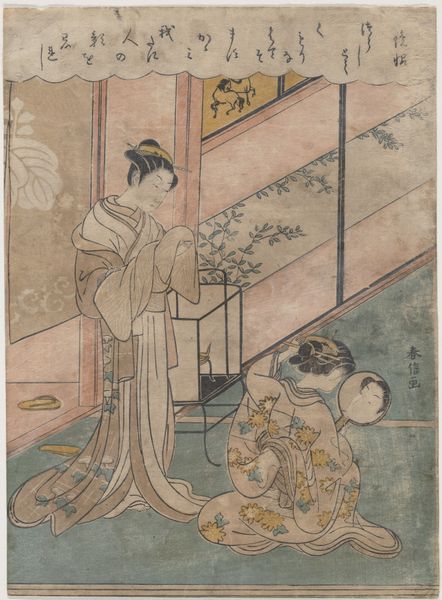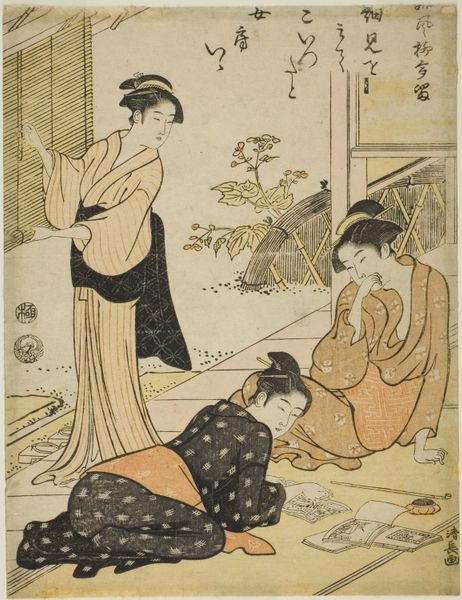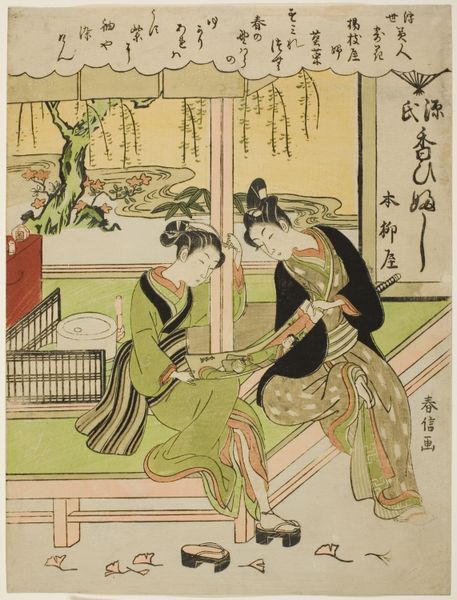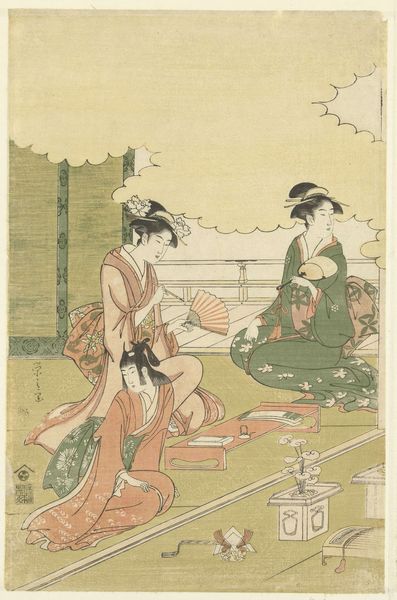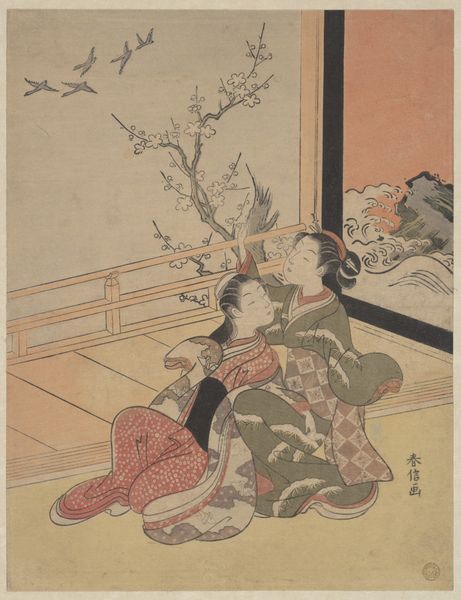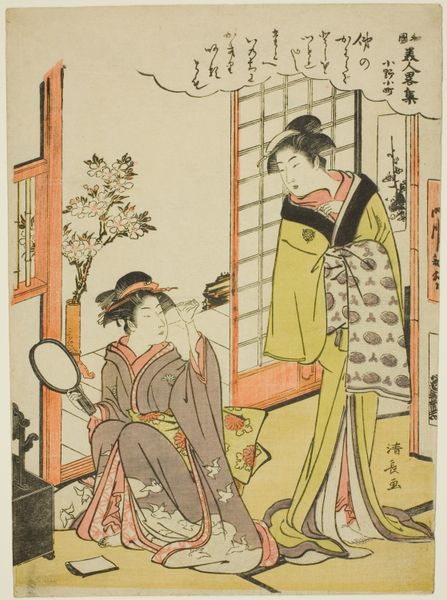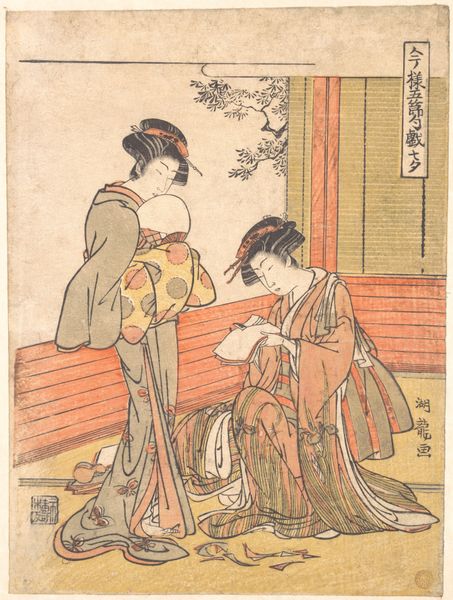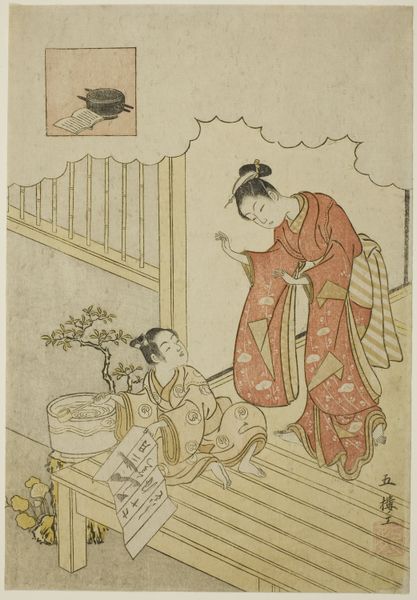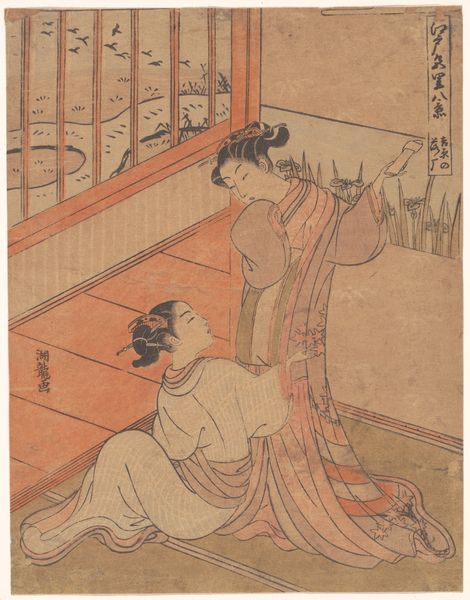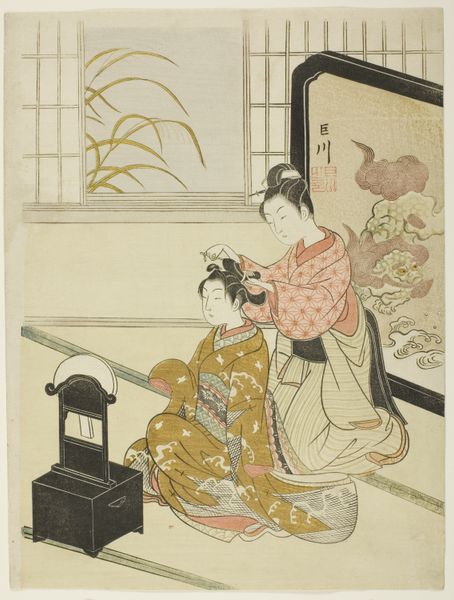
The Cloth-Fulling Jewel River, a Famous Place in Settsu Province (Tōi no Tamagawa, Settsu no meisho), from an untitled series of Six Jewel Rivers (Mu Tamagawa) 1766 - 1767
0:00
0:00
# print
#
asian-art
#
ukiyo-e
#
figuration
#
genre-painting
Dimensions: 10 3/4 x 7 7/8 in. (27.3 x 20 cm) medium-size print (chu-ban)
Copyright: Public Domain
Suzuki Harunobu created this woodblock print, "The Cloth-Fulling Jewel River," in Japan during the 1760s. Its serene depiction of women at work belies the complex social commentary embedded within. Here, Harunobu engages with the “mitate” tradition, a playful genre that juxtaposes classical literary themes with contemporary life. The "Six Jewel Rivers" was a popular poetic theme, referring to six rivers famed for their beauty. Harunobu cleverly recasts this lofty subject within the context of Edo period Japan, showing us women fulling cloth, a mundane task elevated to a scene of delicate beauty. Look at the window; it provides a glimpse of the outside world. The poem inscription further connects the scene to classical verse, bridging the gap between high culture and the everyday. To understand the print fully, one must consider the socio-economic conditions of the time. Woodblock prints were a form of mass media, catering to a broad audience. Artists were employed by publishers to produce prints for the floating world, a world of changing fashion. Art historians use a variety of sources to interpret these works. Poetic and literary texts, combined with an understanding of artistic patronage, help us understand the function of art in society.
Comments
No comments
Be the first to comment and join the conversation on the ultimate creative platform.

